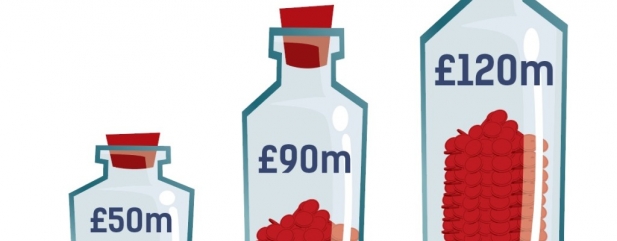Archived article
Please note that tax, investment, pension and ISA rules can change and the information and any views contained in this article may now be inaccurate.
Navigating the lifetime allowance at death

Thousands of savers have already been caught by the lifetime allowance, the limit which restricts how much you can save in a pension throughout your life to £1m.
According to a Freedom of Information request submitted by The Telegraph, the taxman raked in £120m in lifetime allowance charges in 2016/17. This was up from £90m in 2015/16 and more than double the £50m levied by HM Revenue & Customs (HMRC) in 2014/15.
These figures only relate to ‘accounting for tax’ returns from pension firms, and so don’t take into account self-assessment returns provided by individuals.
Cause for concern
The fact the Government’s lifetime allowance tax take has gone up should be of little surprise. The limit has been steadily reduced from £1.8m in 2010.
However, it is the way savers are incurring a ifetime allowance charge on withdrawals above the £1m cap that is potentially a cause for concern.
If you exceed the lifetime allowance you have two options – take the excess as a lump sum and pay 55% tax, or leave it within your pension and pay a 25% charge. If you keep the excess in your pension you will pay income tax as normal when you withdraw it.
It’s worth noting that if you have obtained some form of ‘protection’ you will be able to shelter more of your pot from these tax charges.
Most people took excess as a lump sum
According to HMRC, of the 2,590 who incurred a lifetime allowance charge in 2016/17, the vast majority (1,960) took the excess as a lump sum and so faced a 55% penalty. However, generous pension death benefit rules mean for many this might not be the best option.
Pensions can be passed on tax-free if you die before age 75 and are taxed at your beneficiary’s marginal rate if you die after 75.
Now anyone who takes the excess as a lump sum not only pays a 55% charge – the money also becomes subject to inheritance tax (IHT). That means when you die your family could potentially face another 40% tax bill on the money.
If the money is left in the pension the charge on the excess is only 25% and at death your recipient could pay no tax at all.
Clearly the decision of whether to take any excess as a lump sum or leave it in the pension depends on your personal circumstances, and particularly the extent to which you want to pass anything on to beneficiaries.
Pensions and IHT can be fiendishly complex, so if you’re at all unsure of your options it’s worth speaking to a regulated financial adviser.
Tom Selby,
Senior Analyst, AJ Bell
Important information:
These articles are provided by Shares magazine which is published by AJ Bell Media, a part of AJ Bell. Shares is not written by AJ Bell.
Shares is provided for your general information and use and is not a personal recommendation to invest. It is not intended to be relied upon by you in making or not making any investment decisions. The investments referred to in these articles will not be suitable for all investors. If in doubt please seek appropriate independent financial advice.
Investors acting on the information in these articles do so at their own risk and AJ Bell Media and its staff do not accept liability for losses suffered by investors as a result of their investment decisions.
Issue contents
Big News
- Big news in the banking sector
- Gambling stocks in focus ahead of Government review
- Cobham appoints former Airbus UK chief
- MJ Gleeson is one of our top picks among housebuilders
- What next for investors after German elections?
- Central Asia Metals’ zinc move makes the stock higher risk
- UK hotel growth to decline in 2018
 magazine
magazine









